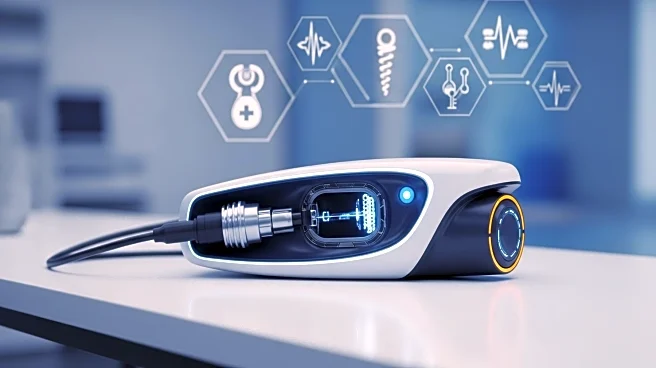What's Happening?
Advanced imaging technologies, particularly multiparametric MRI (mpMRI), are revolutionizing prostate cancer detection and management. These technologies provide detailed insights into the prostate gland's structure and function, enabling more accurate detection of clinically significant cancers while reducing unnecessary biopsies. The integration of artificial intelligence (AI) with imaging further enhances diagnostic precision, allowing for the analysis of vast amounts of imaging data to detect subtle patterns invisible to the human eye. This approach not only improves diagnostic accuracy but also provides valuable insights into tumor aggressiveness, enabling personalized treatment plans tailored to each patient's unique needs. AI-powered imaging standardizes interpretation across radiologists and healthcare centers, reducing inter-observer variability and improving patient stratification based on risk.
Why It's Important?
The integration of AI with advanced imaging technologies is transforming the continuum of prostate cancer care, from early detection to treatment planning and follow-up. This transformation is crucial as healthcare systems face increasing pressure to deliver better outcomes with limited resources. AI-powered imaging can address disparities in prostate cancer care by providing high-quality assessments even in resource-constrained settings, thus extending the benefits of early detection and personalized care to a broader patient population. Additionally, imaging biomarkers play a critical role in precision medicine, guiding the development of novel treatments and improving clinical trial outcomes. The ability to predict tumor behavior and response to treatment could help avoid unnecessary treatments and ensure timely intervention for aggressive tumors.
What's Next?
Continued investment in research, robust clinical validation, and efforts to ensure equitable access to advanced imaging technologies will be key to maximizing their impact on prostate cancer outcomes. Collaboration between clinicians, researchers, technology developers, and patient advocacy groups is essential to accelerate the adoption of these tools. Awareness efforts should include education about risk factors and the importance of screening, as well as information about the latest diagnostic tools available. Patients and clinicians should be empowered to ask about advanced imaging options and participate in shared decision-making about their care.
Beyond the Headlines
The potential for advanced imaging to address disparities in prostate cancer care is significant, particularly in regions with limited access to specialist diagnostics. As technology becomes more affordable and widely implemented, there is an opportunity to extend the benefits of early detection and personalized care globally. The integration of AI with imaging not only improves diagnostics but also transforms the entire continuum of prostate cancer care, paving the way for a more patient-centered approach. This transformation is particularly important as healthcare systems worldwide face increasing pressure to deliver better outcomes with limited resources.










